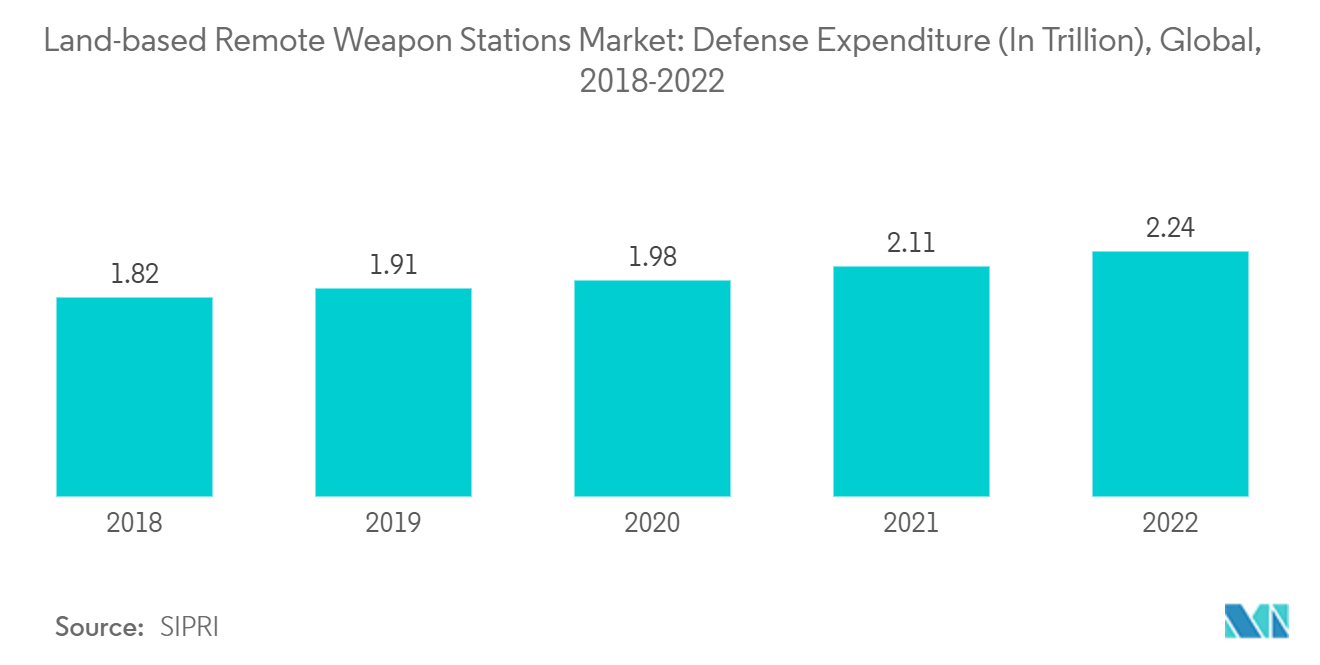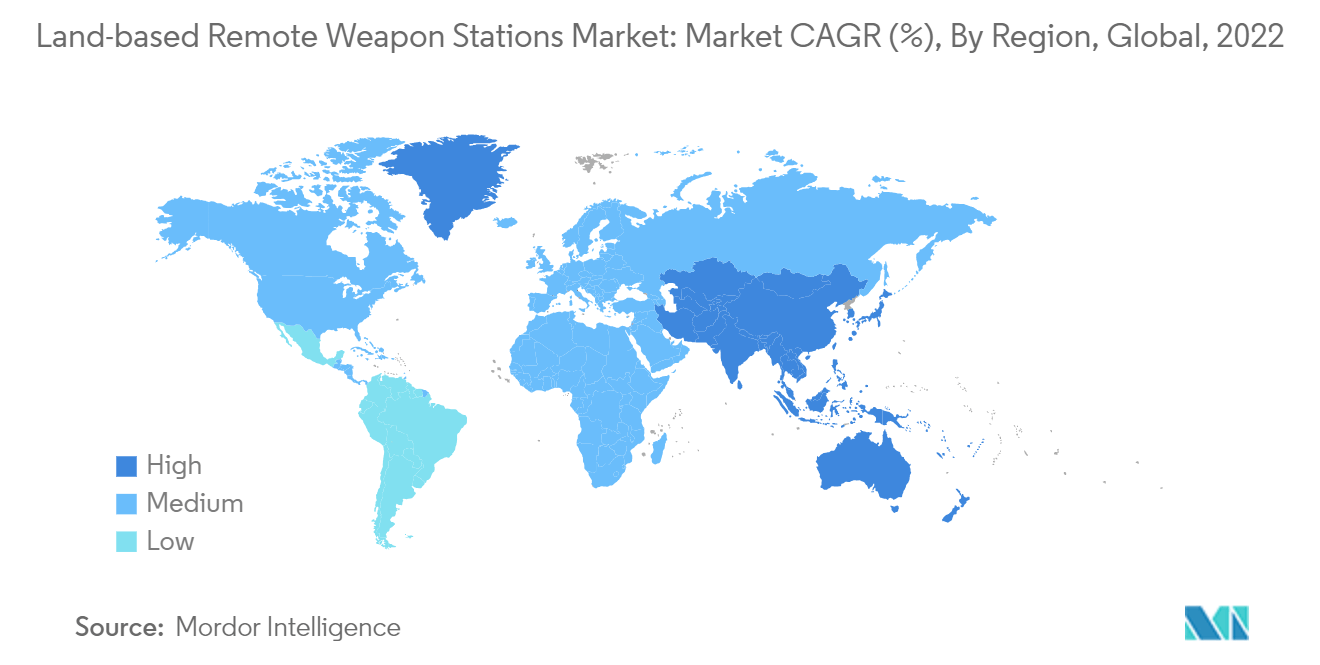Market Trends of Land-based Remote Weapon Stations Industry
Stationary Structures to Witness Highest Growth During the Forecast Period
Military camp protection has always been an issue for the troops stationed in remote locations and far-away war zones. The demand for these systems is expected to increase due to rising military expenditure and various military modernization efforts. For instance, in 2022, the global military expenditure reached USD 2,240 billion, with a growth of 6% compared to 2021. Also, numerous attacks on military bases and outposts increase the demand for stationary weapon stations for protecting specific areas. In addition, stationary RWS, especially sentry guns, are also being used to guard the borders of some countries. There has been a growing trend towards procuring containerized weapon systems (CWS), which are Tricon containers optimized to provide rapid direct fire-power support for combat outposts, patrol bases, forward operating bases, ports, and shipboard defense applications.
In the past years, the US Army has acquired a number of such CWS to protect its military bases and perimeters against external threats. Each CWS has a machine gun, grenade launcher, or even an anti-tank weapon that can detect and respond to enemy fire. CWS is essentially stationary RWS, and thus, the increase in popularity of such systems can also help the growth of the stationary structures segment in the years to come. For instance, the US Army issued a solicitation in August 2021 for a contract worth USD 1.49 billion to procure remote weapon systems that can be mounted on both mobile and stationary platforms for a period of five years. Similarly, in November 2022, Kongsberg Defence & Aerospace announced a partnership with Thales UK to support the British armed forces’ Protector Remote Weapon Systems (RWS) program. The Protector RWS is promoted globally by Kongsberg and Thales, with around 1,000 of the weapon systems being integrated into British defense. The protector family includes light machine guns, light cannons, and medium-caliber cannons that can be mounted on land vehicles and stationed platforms. Such developments are expected to support the growth of the market in the coming years.

Asia-Pacific to Exhibit the Highest Growth Rate During the Forecast Period
Asia-Pacific countries such as India, China, Japan, Australia, South Korea, etc., are some of the top military spenders in the world. The rise in border conflicts, terrorism, and territorial disputes is propelling the market growth for armored vehicles and static and mobile land-based remote weapon station systems in the region. In November 2022, the Indian Army released a request for proposal for the procurement of 90 Remote Weapon Station systems armed with 12.7mm machine guns under the Buy India category through a fast-track procedure. The army plans to integrate this RCWS with the armored personnel carrier Kalyani M4.
Additionally, to cater to the growing international demand for lightweight RWS systems that can be fitted to a wide range of protected and utility vehicles. In June 2023, Australia’s Electro Optic Systems (EOS) opened a new R150 Remote Weapon System (RWS) production line at its manufacturing facility in Canberra. The R150 can keep soldiers safe by allowing them to remain secure within the vehicle, reducing their exposure to hostile fire. Furthermore, in April 2022, a new type of remote weapon station developed by China North Industries Co. was tested by the Chinese Army. This remotely controlled weapons station can be mounted on an armored vehicle mounted with a 30mm remotely operated Canon and is capable of annihilating light armored force. Such developments are expected to propel the market growth in the region during the forecast period.


